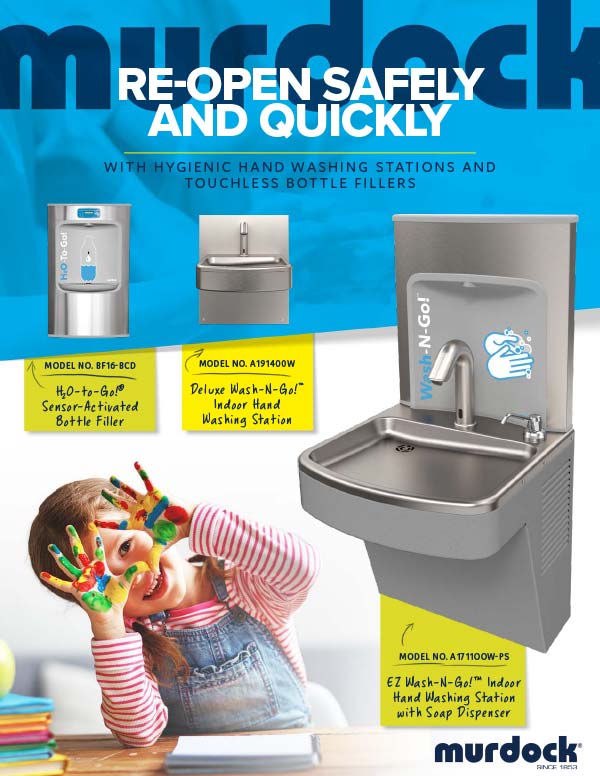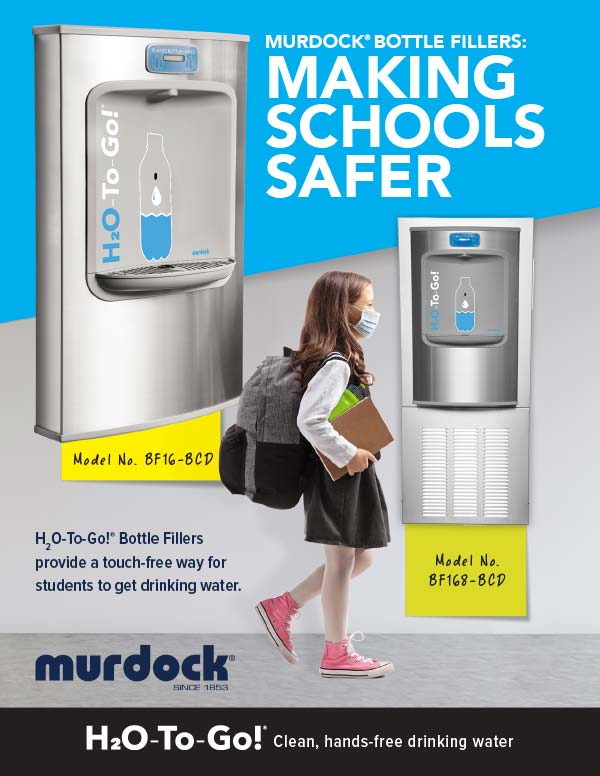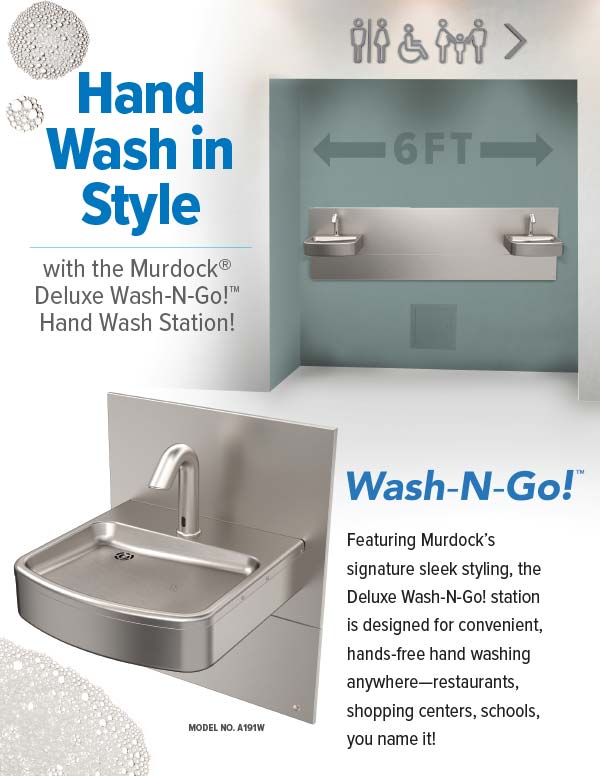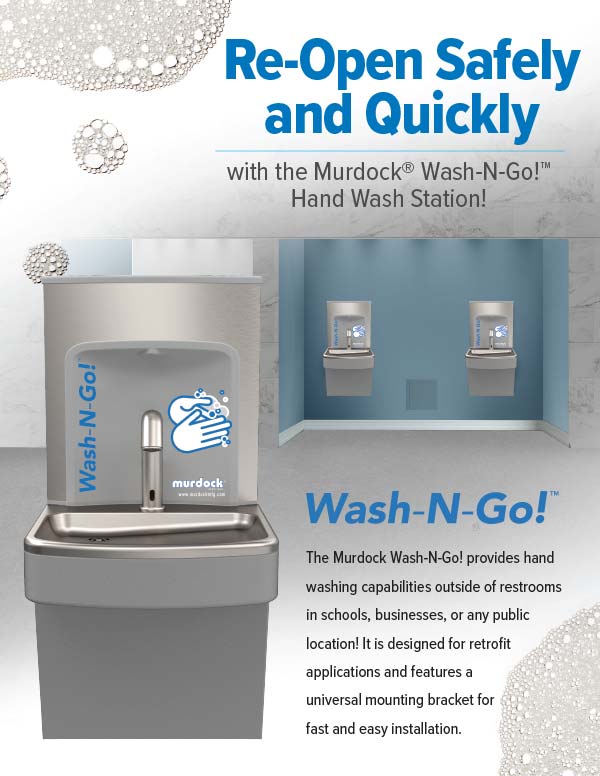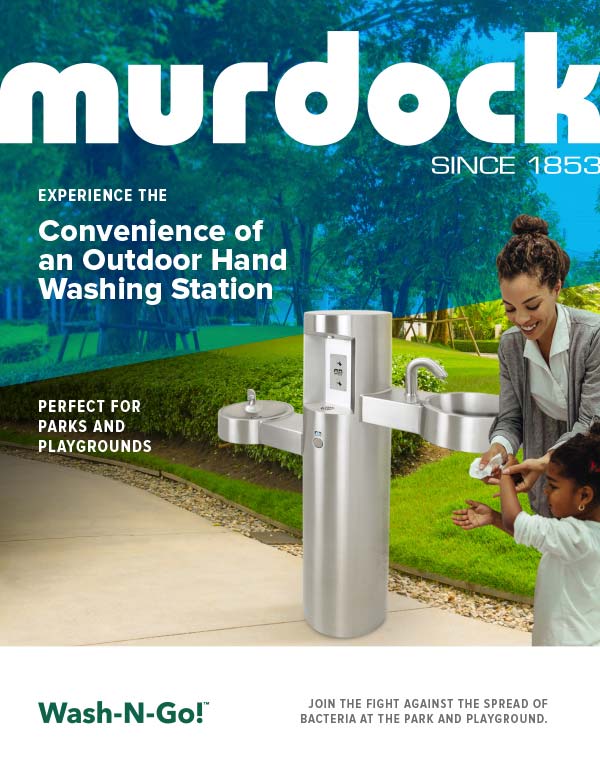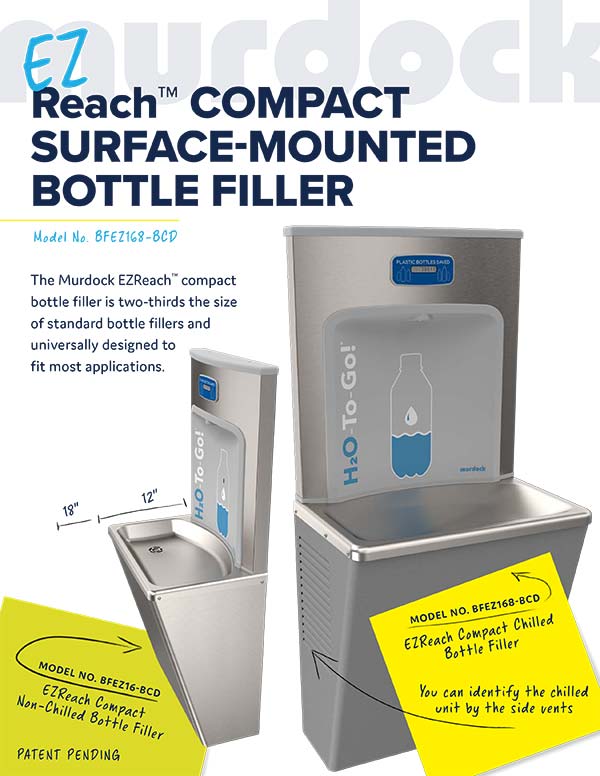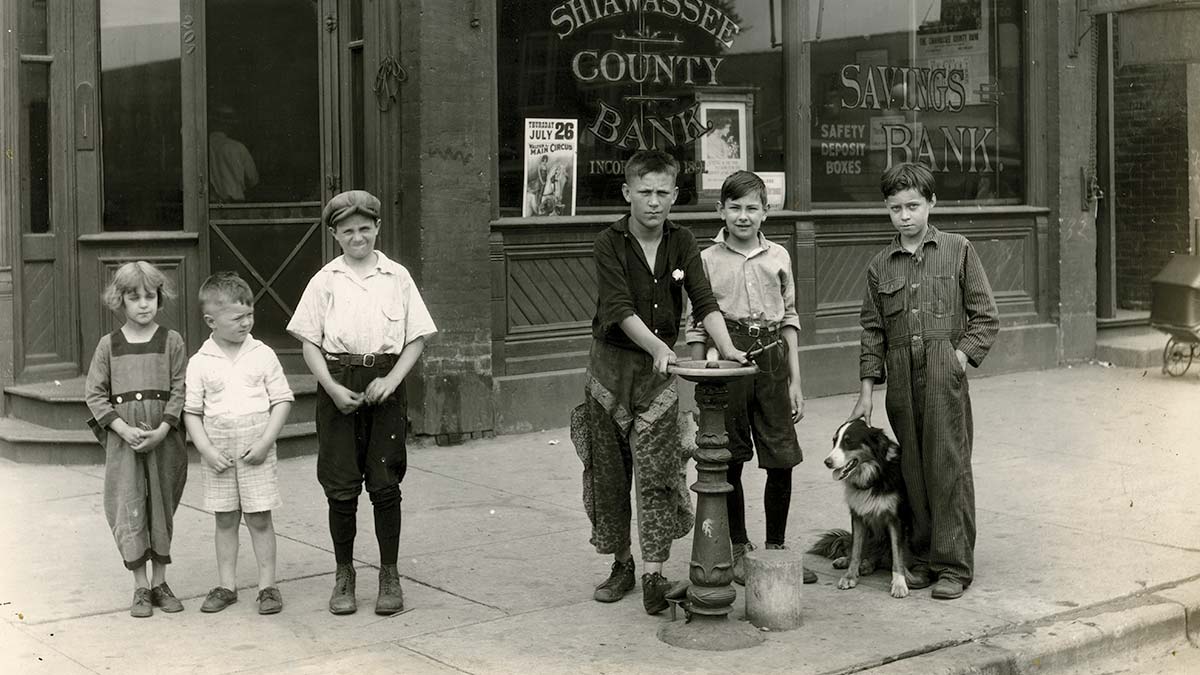
A place is never rightfully called a ‘city’ without water fountains.
Those words were penned by the Greek writer Pausanias in the second century. And he would know a thing or two about water fountains, as early records tell us fountains may have originated in Ancient Greece.
Although those ancient fountains were quite stunning and often featured sculpted gods and goddesses, they were not just decorative. No, those public fountains were functional—giving access to clean spring water. As populations grew and cities expanded, so too did the need for public fountains.
In the mid-1800s in England, we saw the establishment of the Metropolitan Free Drinking Fountain Association. Its mission? To provide public fountains across London using filters and other means to ensure Londoners and visitors had access to higher quality water than was available in most households.
However, as scientists began to understand disease and how it spreads, drinking fountains had to change. For example, those early fountains featured a communal cup attached by a chain. Today, we would consider that absurd and unhealthy.
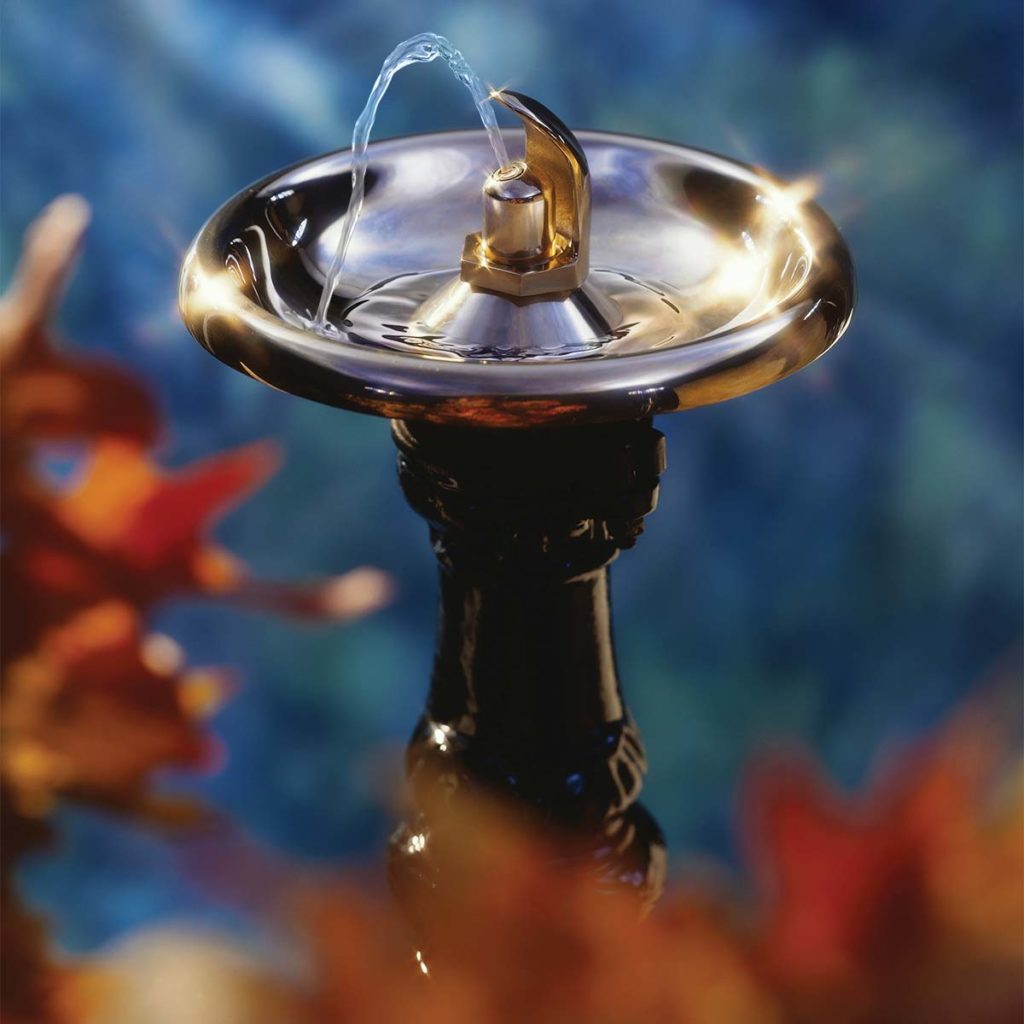
Here in the U.S., Murdock’s reputation for high-quality, well-made products led to our inclusion in high-profile Depression-era projects by the Tennessee Valley Authority (1933), the Civilian Conservation Corps (1933), and the Works Progress Administration (1935). Murdock’s M-1776 Classic Style cast iron water fountain (no shared cup needed!) was one of the first in the U.S. It’s still manufactured in our factory, and many of our century-old models are still in operation today.
There have been only a few studies examining the safety of U.S. water fountains, but they offer minimal evidence of fountain-related health issues over the past 25 years (pre-COVID-19). In those few instances, contamination was traced to microorganisms and heavy metals.
Fact:
Did you know that there was a time when drinking fountains could be found in school bathrooms? Thankfully here in the U.S. and other places, that is illegal. The International Plumbing Code or the Uniform Plumbing Code prohibits drinking fountains in public restrooms (ICC 2000; IAPMO 2000).
Still, the identified health risks of water fountains are few and far between, especially when looking at the public drinking water system as a whole.
Between 1971 and 2006, over 80 percent of deficiencies connected to drinking water-related outbreaks in the United States were caused by broad, systemic problems, such as the treatment and distribution of potable water, rather than specific contamination at the point of use.*
More recent reports failed to find any special links between disease outbreaks and drinking fountains between 2005 and 2020 (pre-COVID-19 research).
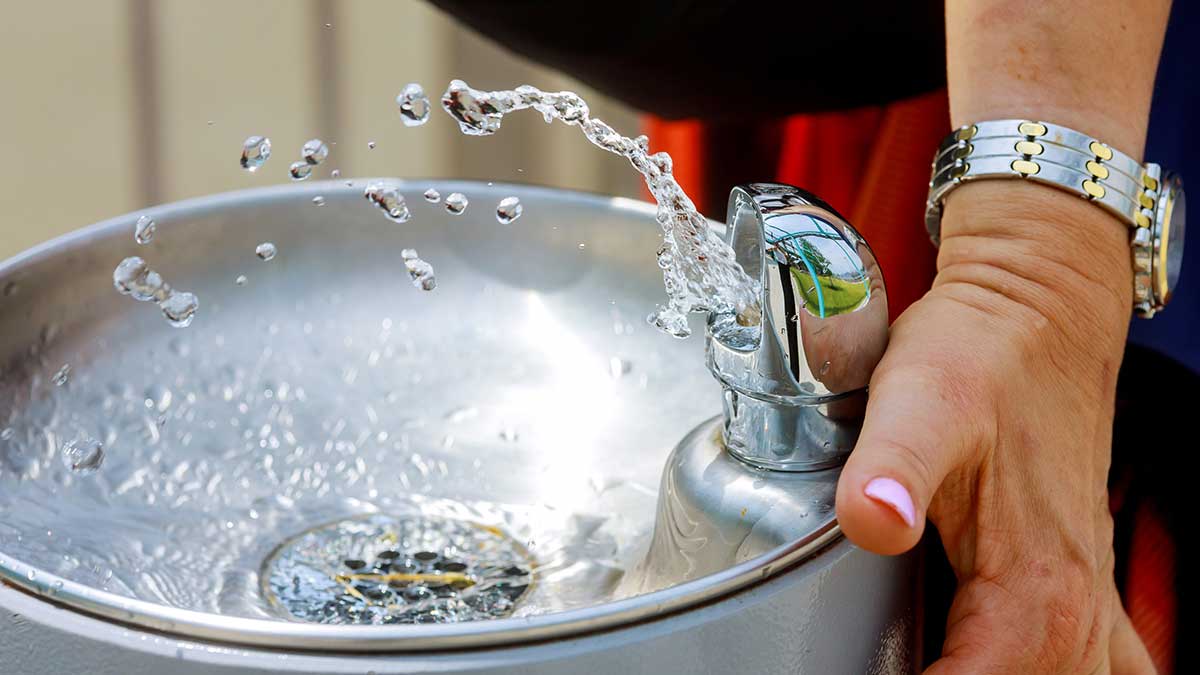
But if you are still worried, the likeliest place for germs to accumulate is not in the bubbler itself but on the push button used to activate water flow. It is for this very reason that we have been seeing much higher interest in touchless, sensor-operated bubblers.
Until recently, the benefits of access to drinking water via a drinking fountain far outweighed the negligible risks. Whether indoors or out, a drinking fountain can provide free hydration to thousands of people and help keep plastic bottles out of landfills and, even worse, our oceans and fresh waterways.
However, with the advent of the Coronavirus pandemic, there has been renewed interest in the safety of drinking fountains. In Poland, we know that the government ordered all bubbler fountains to be disabled for fear of the spread of bacteria and germs. Fortunately, alternatives are readily available—read our case study for details.
Fact:
An early concern of the American Society for the Prevention of Cruelty to Animals, formed in 1866, was fresh water availability for workhorses in urban areas. That concern brought about the popularity of combination drinking fountains that provided a bubbler for people, a water trough for horses, and sometimes a lower basin for dogs.
In the years between 1903 and 1913, more than 120 fountains were donated by Hermon Lee Ensign’s National Humane Alliance to communities across the United States. Murdock has carried on this tradition with our pedal-operated hydrants and pet fountains and showers.
Water Refill Stations Are Better
Angela Rasmussen, a virus researcher at Columbia University, recently told ABC News that filling a water bottle is better than drinking directly from the fountain—particularly during the pandemic. This helps ensure you don’t leave saliva on the fountain, making it safer for others.
But instead of asking people to awkwardly fill bottles from a fountain’s bubbler, it is better to provide a touchless, sensor-activated water refill station. A water bottle filler can be a replacement for fountains or provided in addition to a drinking fountain.
Even the U.S. Centers for Disease Control and Prevention encourages the use of water bottles. But the CDC doesn’t go so far as to recommend shutting down traditional drinking fountains with bubblers. Instead, they recommend keeping them operational and regularly cleaning and sanitizing the fountains. Why? Not everyone has a bottle handy when they are thirsty. By cleaning and sanitizing your fountains, people without a bottle can use the drinking fountain safely.
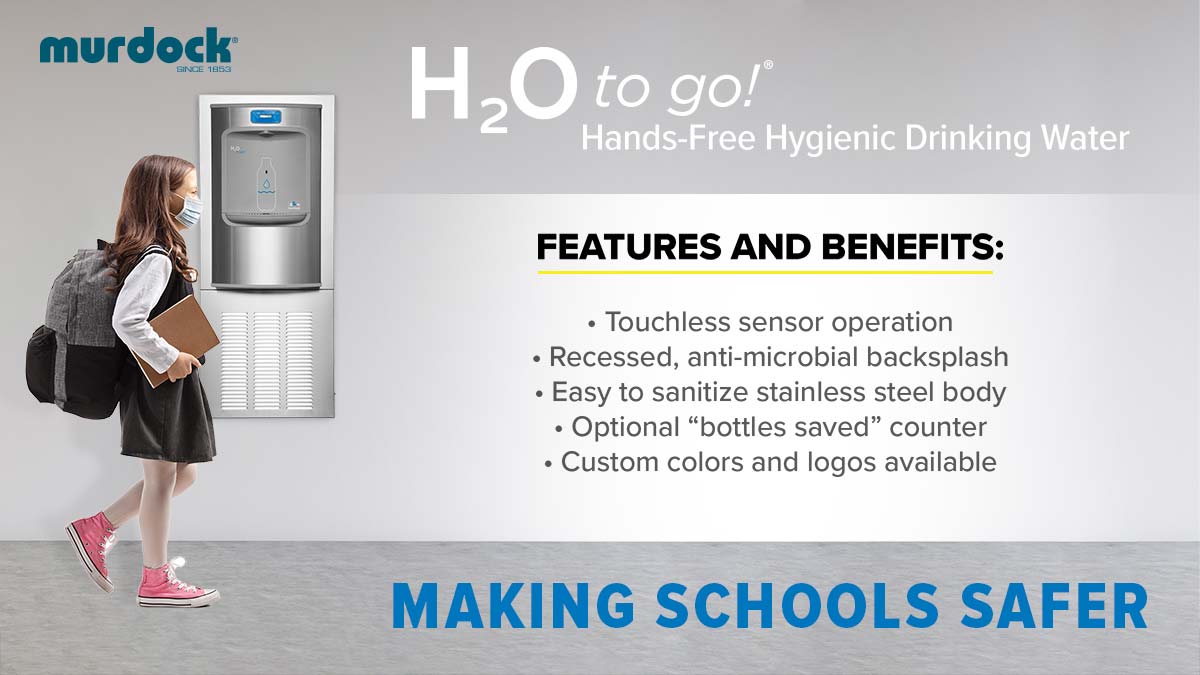
While we know of no evidence that Coronavirus is being spread through the use of water fountains, there is one risk that does need your attention. Because so many closures have taken place this year, there is the risk of Legionnaires’ and other hazards associated with standing water in plumbing systems. Therefore, the CDC recommends schools and businesses should check not just their drinking fountains, but the entire plumbing system for safety issues before reopening.
The Pacific Institute also has an excellent list of cleaning recommendations in their report on drinking fountains and public health that we’ve included here for easy reference. For more information, the full report (PDF) is available to download on their website.
While there is still much we don’t know about COVID-19, we feel that taking safety measures is worth the time and expense in order to provide reliable drinking water to those who want it. Drinking fountains have been around for centuries for very good reason. Murdock Manufacturing always has and will continue to put safety front and center of everything we do.
Contact us today for more information on both new construction and retrofit drinking fountains and water refill stations!
*Craun, G.F., Brunkard, J.M., Yoder, J.S., Roberts, V.A., Carpenter, J., Wade, T., Calderon, R.L., Roberts, J.M., Beach, M.J., & Roy, S.L. (2010). Causes of outbreaks associated with drinking water in the United States from 1971 to 2006. Clinical microbiology reviews, 23(3), 507–528. https://cmr.asm.org/content/23/3/507

